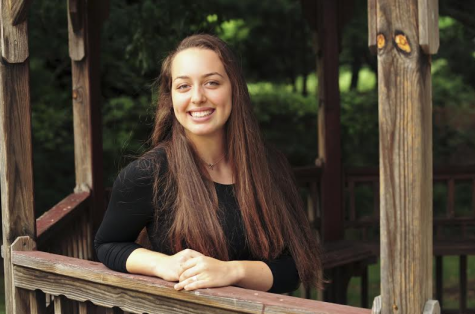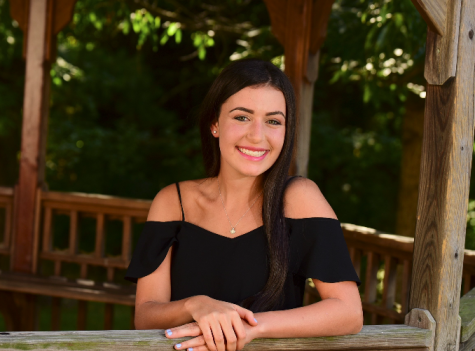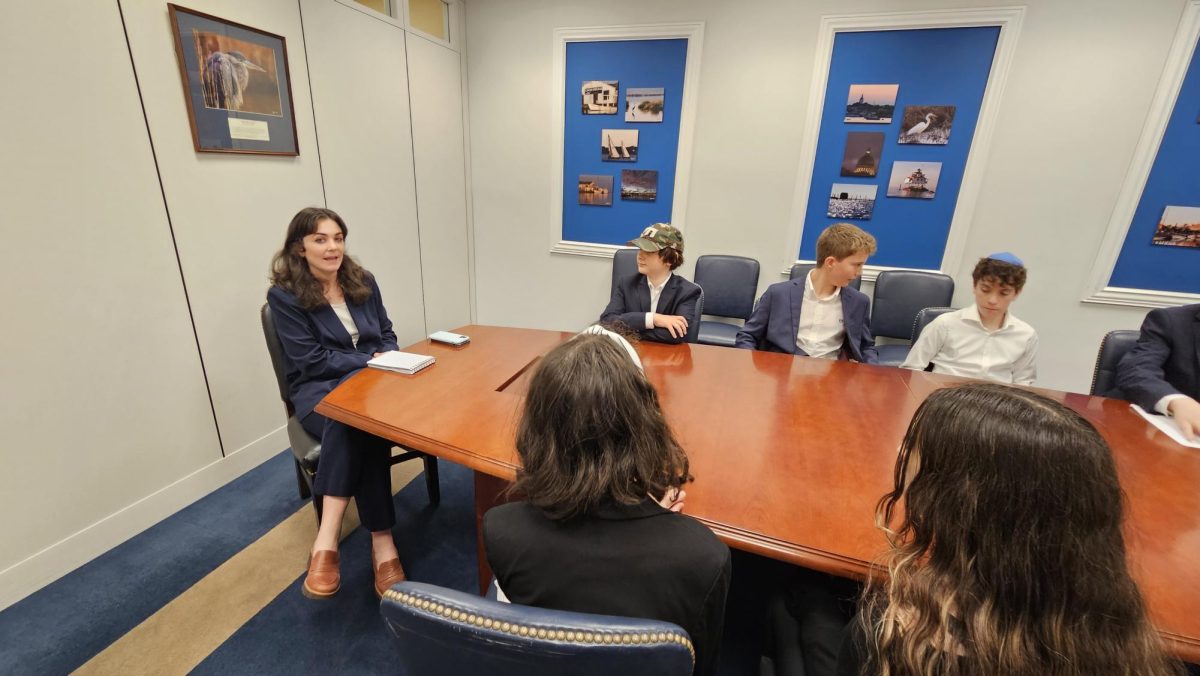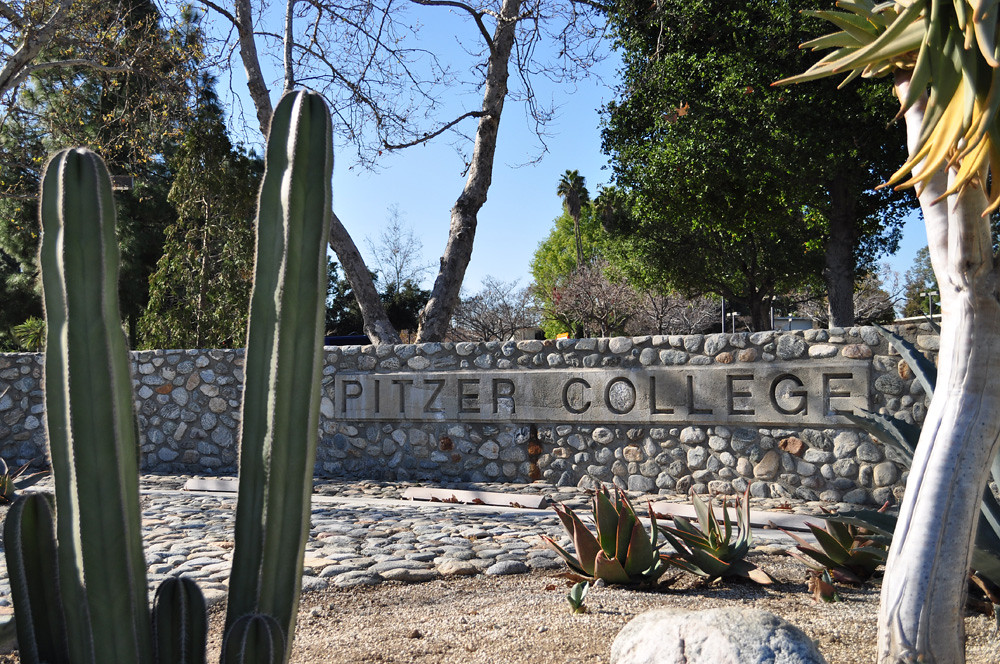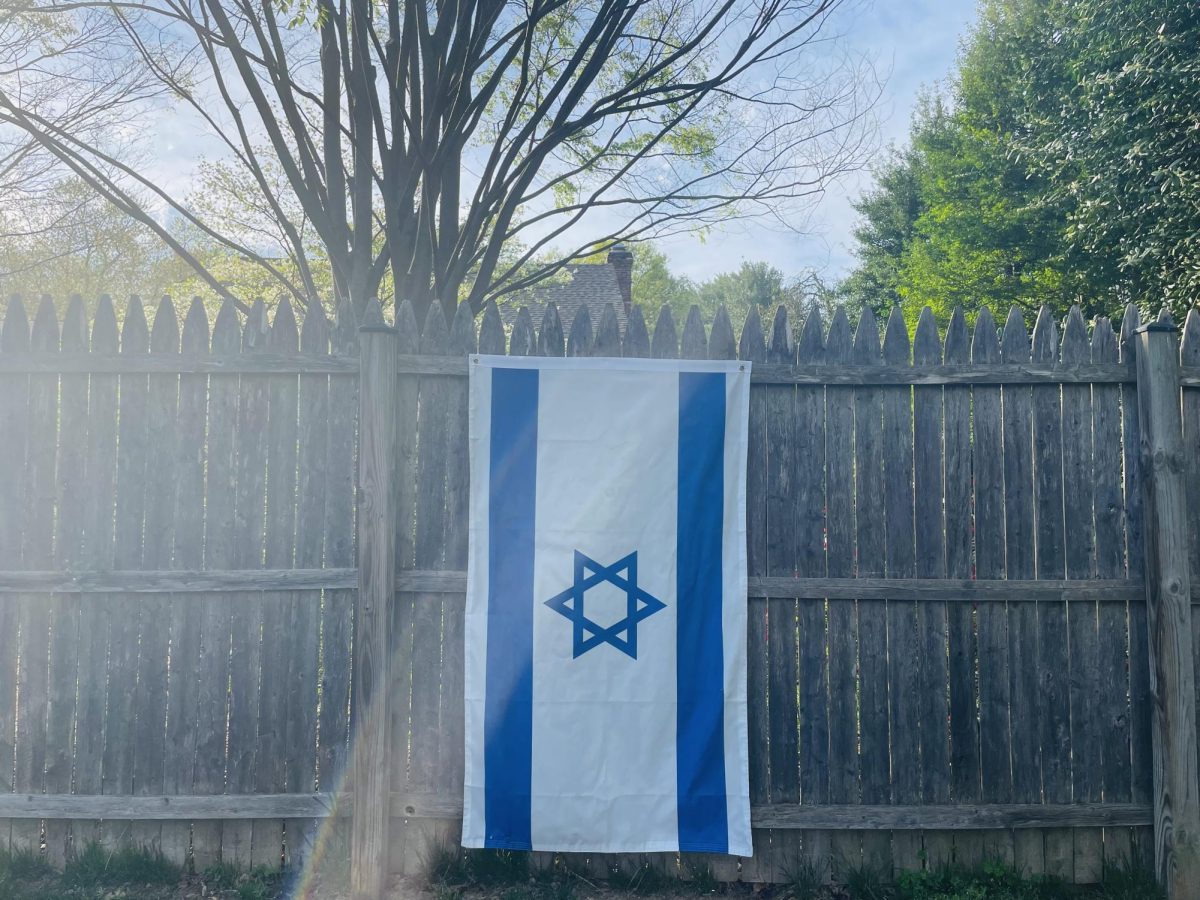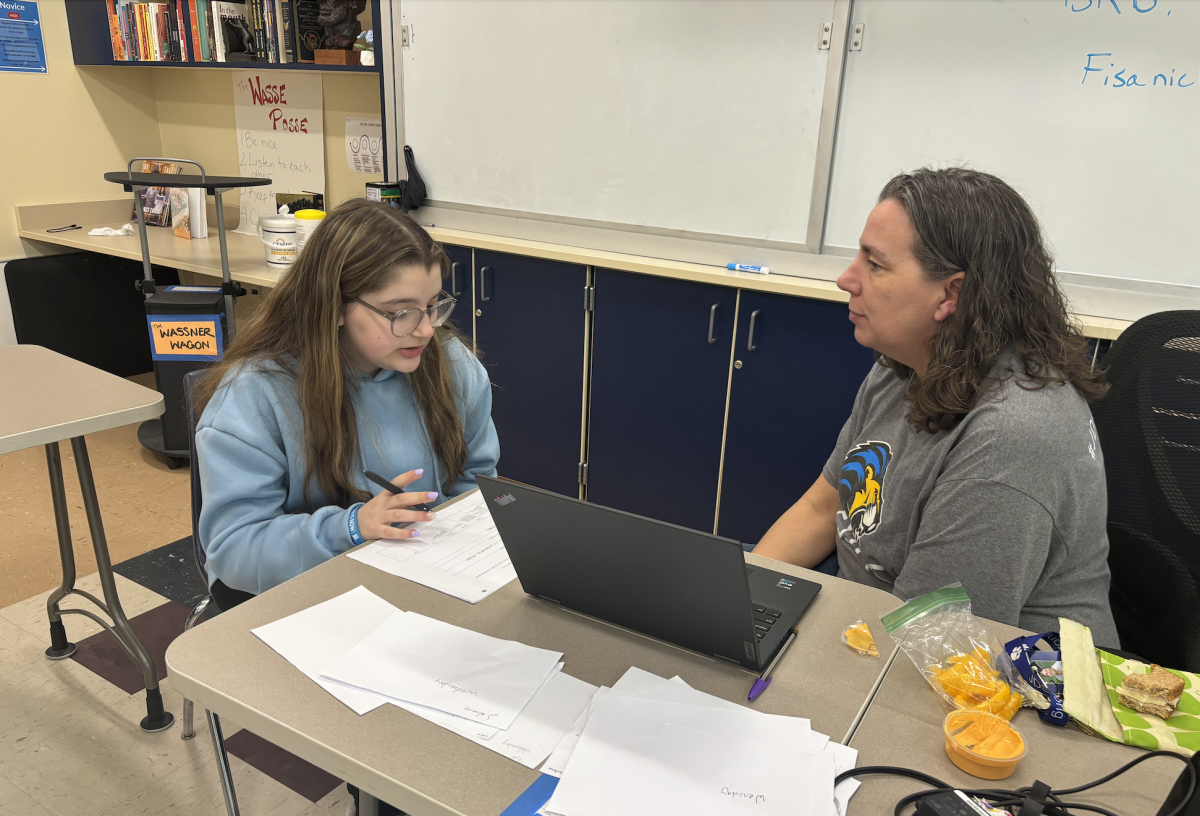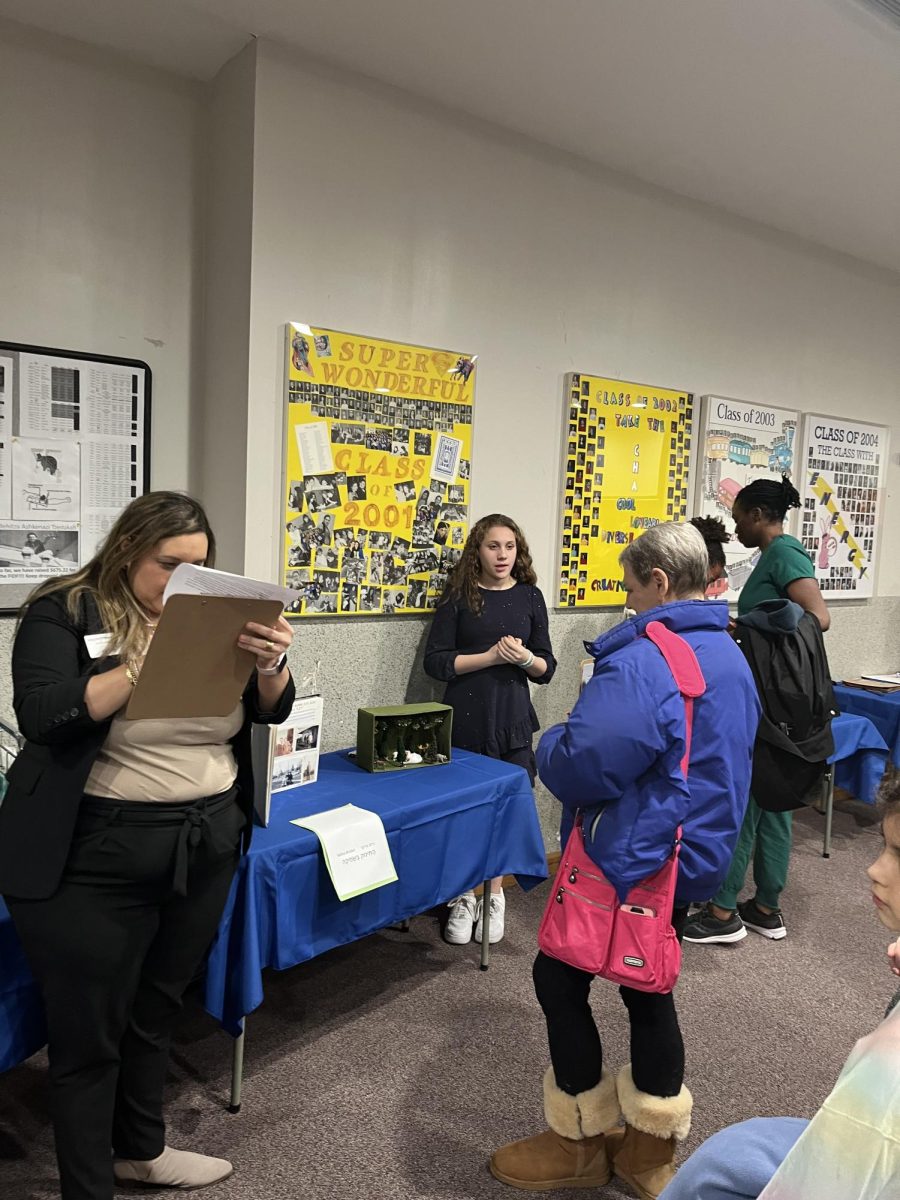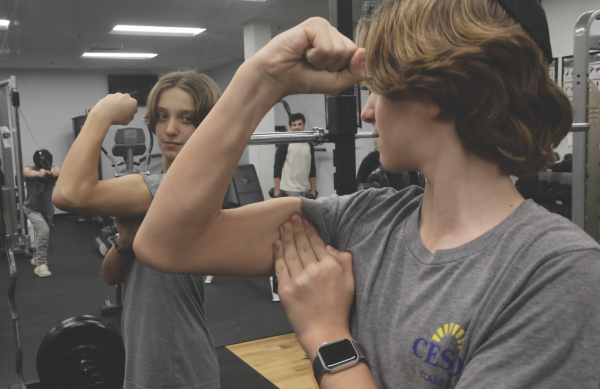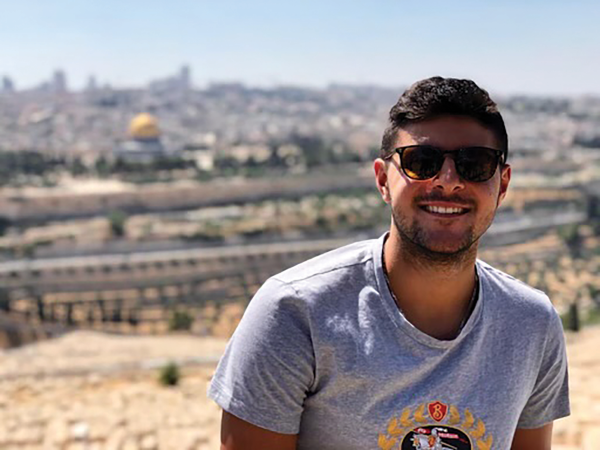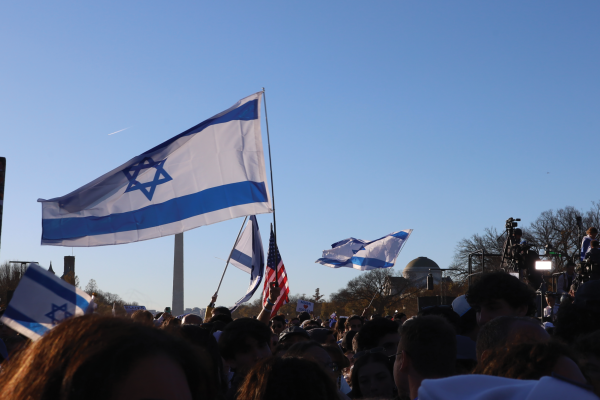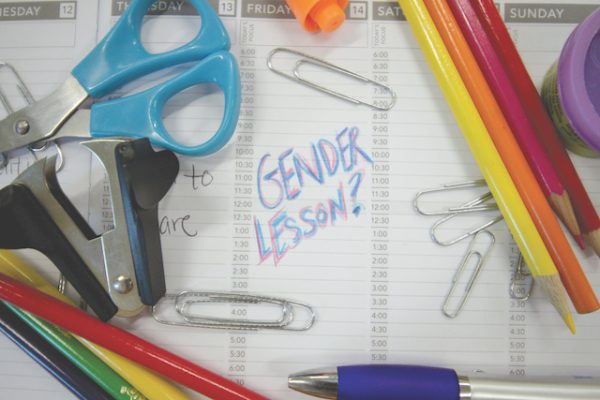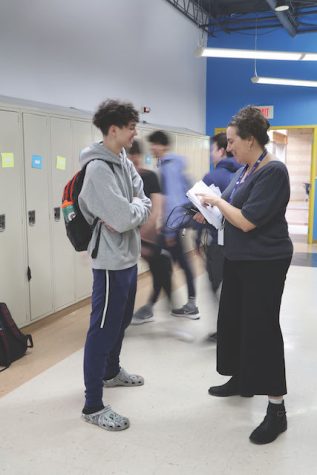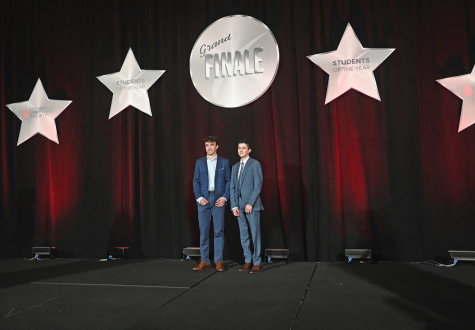Intermarriage
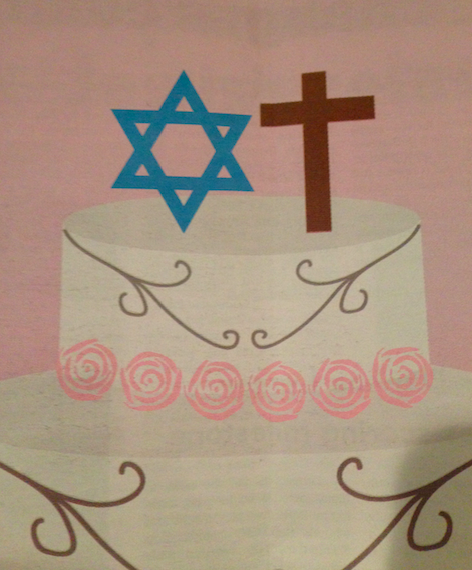
Since the 1960s, the rate of intermarriage has risen steadily in the American Jewish community. Interfaith families make up a small but significant portion of the CESJDS population.
January 30, 2016
If you walk into many houses off of Seven Locks Road on Friday night, you’ll see families lighting candles, reciting blessings over wine and sitting down for Shabbat dinner. Junior Natalie Morgan and freshman Daniel Morgan’s family is no different. Every Friday night, they too practice the traditional Shabbat rituals. The only difference between them and their neighbors is that the Morgans’ father, Randy, is Episcopalian and has no plans to convert.
In 1997, when the Morgans moved to Potomac, they were just looking for an appealing house in Montgomery County. They only realized that they had moved into a modern-Orthodox neighborhood when, after a long Friday full of moving boxes and setting up furniture, one of their new neighbors knocked on their door and invited them for Shabbat dinner.
Lynn Morgan explained that that invitation, and the many invitations that followed, “made a really big difference in how far we took our Judaism.”
As the Morgans became more involved in their mostly Jewish neighborhood, the prospect of Jewish day school became increasingly relevant. After attending a CESJDS open house and speaking to JDS families, the Morgans were impressed with the school and enticed by the possibility of enrolling Natalie there. Before making a final decision, Lynn met with former head of school Jonathan Cannon to ensure that her husband’s religion would not exclude him from school activities and ceremonies.
Eleven years later, Lynn and Randy co-chair the local the American Israel Public Affairs Committee (AIPAC) committee for synagogue outreach. All three of their children attend JDS and Lynn was honored by Jewish Women’s International as a ‘Woman to Watch’ in December. Last April, Lynn finished her eight-year term of service on the board of JDS. Randy has learned Hebrew and said that he is as comfortable in an Orthodox service as he is in a Reform one.
“Most people think I am able to be a part of the community because I don’t have strong religious values or faith of my own. But it’s really the opposite. I am a religious person,” Randy said. “It’s not hard for me to feel a part of this community because the values that are honored in JDS are the same as the values in my own religion.”
Despite the presence of the Morgans and other interfaith families at JDS, the school does not talk openly about interfaith couples or families, according to Lynn.
“The interfaith thing is completely ignored by the school, which is fine,” she said.
This silence has been noticed by teachers as well. Jewish Text teacher Rabbi Derek Rosenbaum often faces awkward moments when a text his class is studying is clearly in opposition to intermarriage.
“A student will raise his or her hand and say, ‘Oh, so what does that mean for me since my dad’s not Jewish?’” Rosenbaum said.
Rosenbaum has noticed that after these types of comments are made, another student will turn around and say, “Oh, I didn’t know that your parent isn’t Jewish.”
When these moments occur, Rosenbaum invites students to discuss how the text is and is not relevant based on society today, and to talk about personal opinions and experiences with interfaith marriages or families. He is glad that his classroom offers a space for students to “voice these aspects of their identity,” but wishes that there could be more formal discussion.
“These moments kind of pop up here and there, but in terms of there being organization, and some place of support, some sort of interfaith family something here at JDS, that doesn’t exist,” Rosenbaum said.
The general view of intermarriage in the JDS student body seems to range from ambivalent to negative. While 40 percent of 256 high school students surveyed reported that they would consider marrying a non-Jew who did not convert to Judaism, only eight percent reported that they believe that interfaith marriages have a positive impact on the American Jewish community.
Out of 230 married alumni surveyed last year, only 14 percent were married to a non-Jew. Senior Eitan Cohen can’t imagine himself becoming part of this group. He believes that the only reliable way to pass down Jewish tradition and Halakhic obligation is by marrying a Jewish partner.
“It’s really hard to think of the Jewish faith as something important or a tying value if you’ve undermined that by marrying out of the religion,” Cohen said.
People like Cohen who are concerned about the impact of intermarriage on the Jewish community often point to studies like those by Brandeis University this past October. The study reported that 40 percent of all millennial children of intermarriage had a bar or bat mitzvah, while 84 percent of all millennial children with two Jewish parents had a bar or bat mitzvah. Additionally, the study reported that 56 percent of all millennial children of intermarriage received no formal Jewish education, while only 14 percent of all millennial children with two Jewish parents received no formal Jewish education.
Head of School Rabbi Mitchel Malkus said that the goal of JDS is to teach students to lead committed Jewish lives, no matter their parents’ religious identities.
“If a student from an intermarried family comes to JDS, I feel that the school can make a difference for that student and that family in terms of leading a Jewish life,” Malkus said.
In 2013, JDS ran a spotlight profile of alumna Lila Shapiro-Cyr (‘91), whose husband is not Jewish, on the school website. In the profile, Shapiro-Cyr, who is the co-president of Kol HaLev synagogue in Baltimore, was quoted saying, “I am so proud to be leading a growing congregation that meets the needs of interfaith families and those who want to explore their Judaism in new and meaningful ways.”
Malkus explained that after the school posted this profile, multiple alumni reached out to him to voice their concerns about the school highlighting an individual who was intermarried and involved in welcoming other interfaith families into the Jewish community. In response, Malkus told them, “If this isn’t what we are educating people to do at JDS, we have a problem.”
Judaism, like many other religions, has a biblical prohibition against intermarriage. In reference to non-Jews, Deuteronomy 7:3 reads, “You shall not marry them, you shall not give your daughter to their son and you shall not take his daughter for your son.” Some, like Jewish Text teacher Rabbi Reuven Slater, who was ordained by an Orthodox yeshivah, find this verse binding.
“My personal view is that it is forbidden under any circumstance,” Slater wrote in an email. “Having said that, every situation is different and how each situation should be handled is something that falls under the purview of a competent and knowledgeable rabbi.”
For Rosenbaum, who was ordained by a Reconstructionist institution, this text is not reflective of the way that Judaism should treat interfaith marriage today. His viewpoint mirrors the approach that some American Jewish communities have embraced: that as interfaith marriage becomes more prevalent, Jewish communities must welcome the couples and families that now constitute such a large portion of the American Jewish population.
Jewish History teacher Rachel Bergstein explained that this approach was heightened when the 2000 – 2001 National Jewish Population survey reported that almost 50 percent of American Jews were married to non-Jewish individuals. On the other hand, Bergstein explained, these results alarmed many traditional American Jews, who feared that American Judaism would slowly disappear as more families became increasingly assimilated and less traditionally Jewish. As a result, many Jewish philanthropists poured money into Jewish summer camps, day schools and youth movements, with the hope that this would halt the high rates of intermarriage.
While Bergstein believes that most Jewish communities have learned to tolerate interfaith marriage, she does not perceive this tolerance to be genuine and thinks that many still find it “embarrassing.”
“I think that people tend to not talk about it as much. They might not refuse to go to the wedding but they might not invite all their friends,” Bergstein said.
Eighth-grader Reilly Lowell, whose mother is Catholic, has experienced this. Lowell underwent a Jewish conversion as a baby. She described herself as observant and said that she prays every day and keeps kosher. Yet, at multiple points in her life, she’s experienced uncomfortable moments because she converted as a child.
Lowell recalled a time in elementary school when she brought up her conversion while presenting the weekly Torah portion to her class. When she told her classmates that she had converted to Judaism, her teacher tried to silence her.
“The assistant teacher said, ‘You should never say that, keep that quiet, don’t let people know that,’” Lowell said.
Conversion is a tricky matter in Judaism, where proselytizing is discouraged. When someone expresses interest in converting, the traditional practice is to turn the potential convert away three times to test their commitment. Leisha Self, the mother of junior Aaron Weiss, experienced this when she underwent her Orthodox conversion. Since her conversion, Self has felt “mostly accepted” into the Jewish community.
One area where Self often feels left out is in Jewish cultural practices.
“This seems silly, but I feel a little bit left out when people sing around the table after a Shabbat meal,” Self wrote in an email. “I think many Jews learned these songs growing up, either in their homes or at Jewish camps. I don’t know them.”
While synagogues and other Jewish institutions offer classes about prayer and Torah, Self wishes that there were classes offered to educate new members of the Jewish community about cultural elements of Judaism like Shabbat songs or attachment to Israel.
“Most of the people in my life have a great and abiding love for Israel,” Self wrote. “I don’t have those kinds of deep feelings, but would like to.”
According to Bergstein, this idea of “shared culture” is often an obstacle for couples where one party was not born Jewish. But historically, she added, even if Jewish people wanted to bridge the cultural gap and marry a non-Jewish partner this was not always an option.
“For intermarriage to take place you need Jews who want to marry non-Jews, but the other part is almost as important if not more important — non-Jews who want to marry Jews,” Bergstein said.
According to Bergstein, “social anti-Semitism” and “ethnic separateness” contributed to an intermarriage rate of almost zero within the American Jewish community until the 1960s.
By 1974, the intermarriage rate had increased to 35 percent. Bergstein explained that as Jews came to be seen as desirable in the larger American society, and intermarriage rates increased, the mainstream Jewish community did not welcome this new trend.
“It used to be that you were really pushed out if you married a non-Jew and you weren’t allowed to do anything,” Bergstein said.
In Bergstein’s classes, when interfaith marriage comes up, she finds that the attitude towards the subject is welcoming, and that most students say that love conquers religious boundaries.
Alumna Eden Katz (‘12) always held this to be true, even when she attended JDS and was not confronted with the potential of dating a non-Jewish person.
“My mindset has always been that I plan to end up with someone who makes me happy, regardless of what religion they are,” Katz wrote in an email interview.
For over a year, Katz has been dating Bennett Garner who was raised Mormon, though he no longer identifies with that religion. While the fact that Garner is not Jewish is something that Katz has thought about, this concern has never made her consider ending their relationship. In fact, Katz described interfaith relationships as being “really valuable to both parties, as well as to the future children.”
Katz celebrated this past Christmas with Garner’s family. She brought challah as a gift for his parents which sparked many discussions about Judaism over the holiday weekend. This experience has helped shape her perception of what a future with a non-Jewish spouse could look like.
“I feel like interfaith families get a bad rep for ‘confusing’ the children, but I think it should be looked at from the other perspective,” Katz wrote. “Children of interfaith couples will grow up from the get-go with open minds. They will think about the difficult questions, instead of blindly accepting a faith. They will see and understand that there is more than one side to every story.”
Katz, whose mother converted to Judaism, said that she plans to raise her children in a Jewish household with a Jewish education regardless of her spouse’s religion.
“I grew up with Shabbat dinners every Friday night, Saturday mornings at Beth Shalom and all of my weekdays at JDS,” Katz wrote. “My parents raised me with the values of Tikkun Olam and Tzedakah, and these are ideals I plan to devote my life to.”
Rosenbaum hopes that tikkun olam will be the basis for the American Jewish community’s future approach towards these families.
“I hope it’s a Jewish world that becomes much more aware that this is the reality we live in, and is just trying to be sensitive, positive and welcoming to interfaith families,” Rosenbaum said. “One can value every life and every person …. but what happens when your friend, or brother or sister falls in love with someone who’s non-Jewish, and is faced now with OK, what happens? Are they gone? Do we just cast them off for fear of them diluting Judaism? Or, do we reach out to them by providing them with a community to have a Jewish wedding and raise kids, and schools, and have a bris or baby naming, and create these positive Jewish experiences?”


